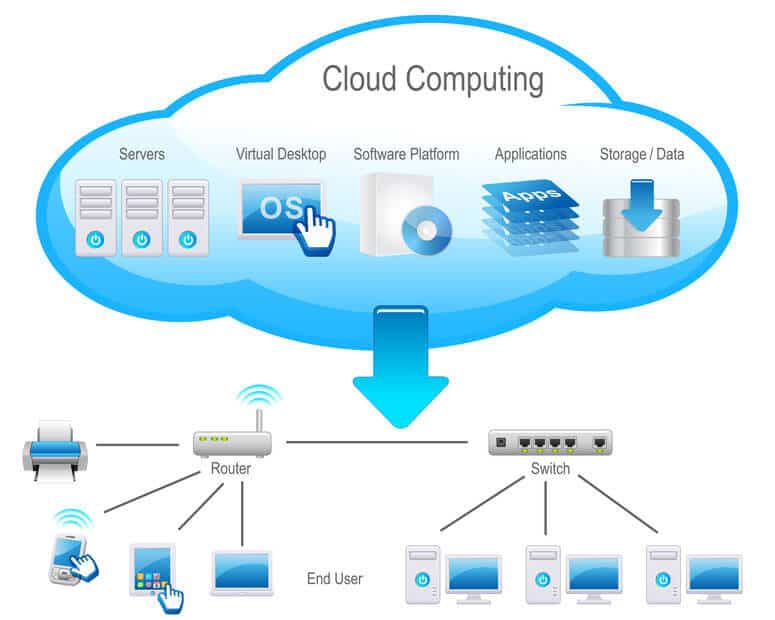
The term “cloud computing” is similar to “Internet”. The model of Cloud Computing is based on cloud illustrations used to symbolize telephone networks and later on to portray Internet. Cloud computing is based on internet computing where common virtual servers provide infrastructure and platform, software’s, hardware devices and other resources. The users have to pay according to their usage of the services. All information that a digitized system must offer is there in cloud-computing. Users can access these services available on the “Internet cloud” without having any technical knowledge of cloud-computing. Thus they can focus more on their business than spending time and acquiring knowledge on resources required to run their business.
What is Cloud Computing?

In Cloud computing consumers don’t have the physical infrastructure but they hire the usage from a third-party source. They use resources as a service and pay only for resources they use. Most cloud computing models include services provided through common servers. Sharing of resources is better as servers are not left idle unnecessarily, which trim down the expenses considerably while rising the speed of application development.
The Architecture of Cloud Computing
Cloud computing design consists of two components i.e. front end and back end. The front end consists of the client’s computer or a computer network and some applications which are required for using the cloud computing system and Back end is the cloud itself which may include various computer machines, data storage devices and servers and the cluster of these clouds make a cloud computing system.
The entire system is controlled through a central server that is also used for observing client’s requests and network traffic guarantying smooth functioning of the system. A special type of software called “Middleware” is used to permit computers which are connected on the network to communicate with each other. Cloud computing systems also makes a copy of data to restore the service which may occur due to a device breakdown. This process is called redundancy and thus cloud computing service providers provide data redundancy.
Benefits of Cloud Computing
- It leads to cutback in costs on hardware and software deployment. Customers can end the contract any time and are often covered by Service Level Agreements with financial consequences. This minimizes risk and uncertainty and guarantees return on investment.
- It is location independent therefore the access to the network is very easy.
- Enlarged flexibility and market suppleness due to the rapid deployment model of cloud computing enhances the ability to re-provision rapidly as and when needed.
- More security at a much lesser fee as compared to traditional standalone applications due to centralization of data and increased security-focused resources
- They are easy to maintain as installation is not required on every user’s computer.
Future of Cloud Computing
According to a study conducted by Forbes, the worldwide market for cloud computing will grow up from $12.1 billion in 2010 to $35.6 billion in 2015. Software and Infrastructure as a service will account for bigger revenues. Another report by IDC affirms global returns from public IT cloud services exceeded $16 billion in 2009 and is expected to achieve $55.5 billion in 2014.
